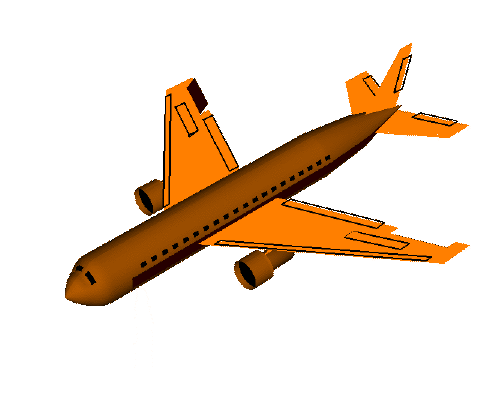|
 What is aerodynamics? The word comes from two Greek words:
aerios, concerning the air, and dynamis,
meaning powerful. Aerodynamics is the study of forces and
the resulting motion of objects through the air. Judging from
the story of Daedalus and Icarus, humans have been interested
in aerodynamics and flying for thousands of years, although
flying in a heavier-than-airmachine has been possible only
in the last hundred years. Aerodynamics affects the motion
of a large airliner, a model
rocket, a beach ball thrown near
the shore, or a kite flying high
overhead. The curveball thrown by
big league baseball pitchers gets its curve from aerodynamics.
What is aerodynamics? The word comes from two Greek words:
aerios, concerning the air, and dynamis,
meaning powerful. Aerodynamics is the study of forces and
the resulting motion of objects through the air. Judging from
the story of Daedalus and Icarus, humans have been interested
in aerodynamics and flying for thousands of years, although
flying in a heavier-than-airmachine has been possible only
in the last hundred years. Aerodynamics affects the motion
of a large airliner, a model
rocket, a beach ball thrown near
the shore, or a kite flying high
overhead. The curveball thrown by
big league baseball pitchers gets its curve from aerodynamics.
At this Web site you can study aerodynamics
at your own pace and to your own level of interest. Some of
the topics included are: Newton's basic equations
of motion; the motion of a free falling
object, that neglects the effects of aerodynamics; the terminal
velocity of a falling object subject to both weight and air
resistance; the three forces (lift, drag, and weight)
that act on a glider; and finally,
the four forces that act on a powered airplane.
Because aerodynamics involves both the motion
of the object and the reaction of the air, there are several
pages devoted to basic gas properties
and how those properties change through the atmosphere.
This site was prepared at NASA Glenn by the
Learning Technologies Project (LTP) (http://www.grc.nasa.gov/WWW/K-12)
to provide background information on basic aerodynamics
as teaching aids for math and science teachers. Some
of the slides were prepared to support FoilSim, an
interactive educational computer program that allows students
to design and test airfoil shapes on a personal computer.
Other slides were prepared to support LTP videoconferencing
workshops (http://www.grc.nasa.gov/WWW/K-12/CoE/Coemain.html)
for teachers and students. FoilSim II
is currently available as a JAVA applet which runs in your
browser. This program can also be downloaded
to your machine.
This site has been intentionally organized
to mirror the unstructured nature of the world wide web. There
are many pages here connected to one another through hyperlinks
and you can then navigate through the links based on your
own interest and inquiry. There is also an index
of topics that you can access from any page, so you are never
more than two clicks away from any other Web page at this
site. However, if you prefer a more structured approach, you
can also take one of our Guided Tours
through the site. Each tour provides a sequence of pages dealing
with some aspect of aerodynamics.
NOTICE --- The site has recently been modified
to support Section 508 of the Rehabilitation Act. Many of
the pages contain mathematical equations which have been produced
graphically and which are too long or complex to provide in
an "ALT" tag. For these pages, we have retained the (non-compliant)
graphical page and have provided a separate (compliant) text
only page which contains all of the information of the original
page. The two pages are connected through hyperlinks.
- Beginner's Guide
to Aerodynamics
- Beginner's Guide
to Propulsion
- Beginner's Guide
to Model Rockets
- Beginner's Guide
to Kites
- Beginner's Guide
to Aeronautics
   
Back to top
Go to...
- Beginner's Guide Home Page
byTom Benson
Please send suggestions/corrections to: benson@grc.nasa.gov
|
